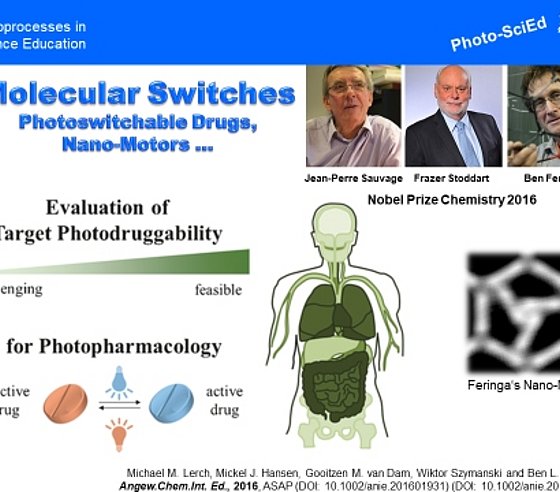3. Nobel Prizes for processes with light


Of course, the applications mentioned above are based on substantial and profound research work. Scientific research involving photoprocesses and photoactive materials has frequently been honoured with Nobel Prizes in recent years. In 2016, Bernard Lucas Feringa, James Fraser Stoddart and Jean-Pierre Sauvage shared the Nobel Prize in Chemistry. They have carried out fundamental work in the design and synthesis of intelligent materials with molecular switches. These can be used, for example, to switch the pharmacological effect of a drug on and off using light of different colors or to drive a nano-motor. Photoactive molecular switches can be used to switch many macroscopic properties of materials, e.g. color, fluorescence, viscosity, elasticity, electrical conductivity and catalytic effect, on and off with light.
The desired property of such "intelligent" materials can be switched on and off remotely without the addition of a chemicals and without the supply of heat or electrical energy, but simply by irradiation with light of a defined wavelength. The German physicist Stefan Walter Hell was awarded the Nobel Prize in Chemistry in 2014 for having used photochemical and photophysical processes to break the 100-year-old physical dogma that objects smaller than 200 nanometres cannot be made clearly visible under a light microscope. He was not looking for better lenses for microscopes, but for molecules with the right properties for switching fluorescence on and off. This is how STED microscopy (Stimulated Emission Depletion) was first developed: Switching fluorescence on and off for a certain type of molecule. It was the break-through in super-resolution micro- and nanoscopy that led to ground-breaking developments, particularly in medicine.
